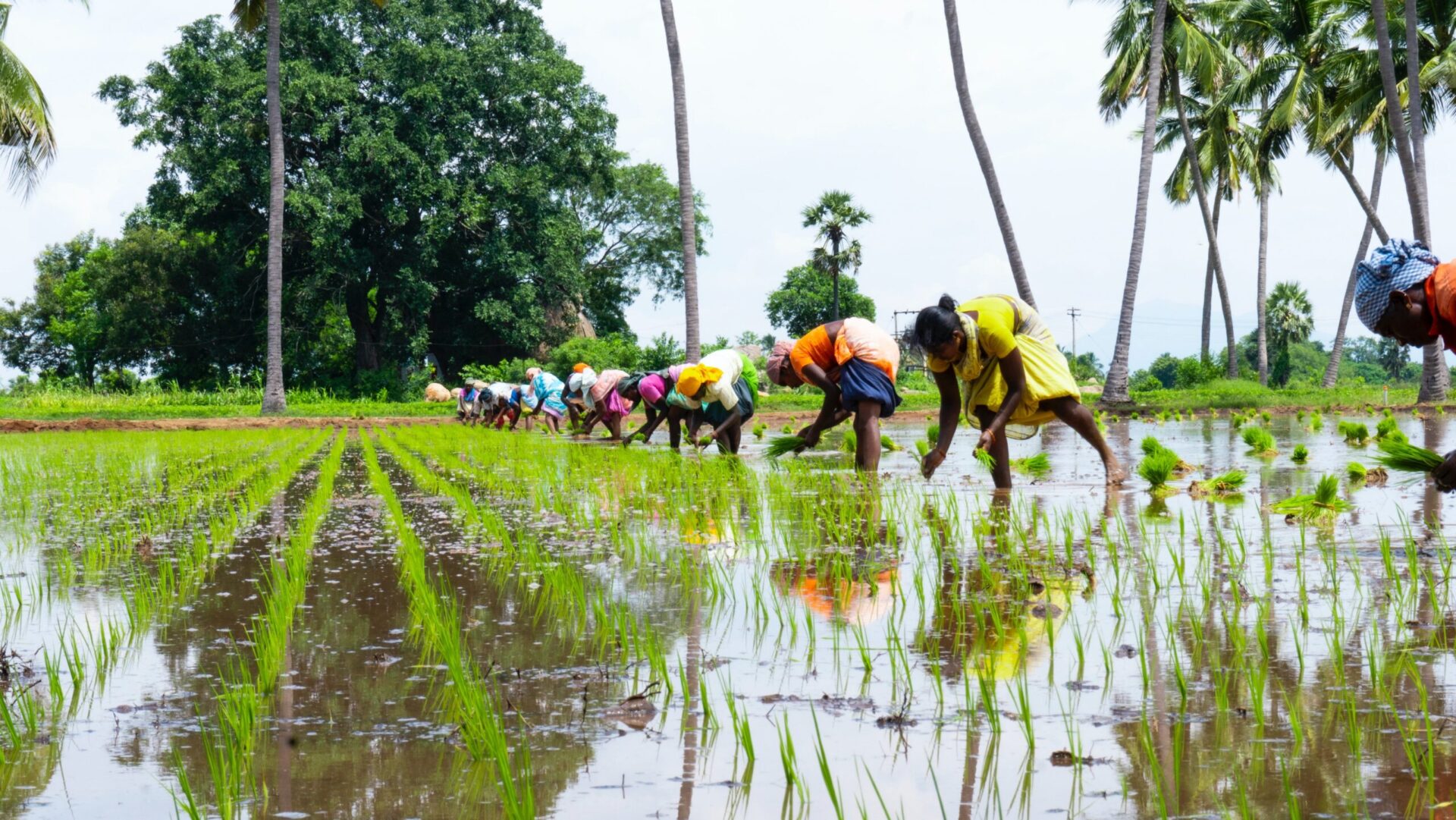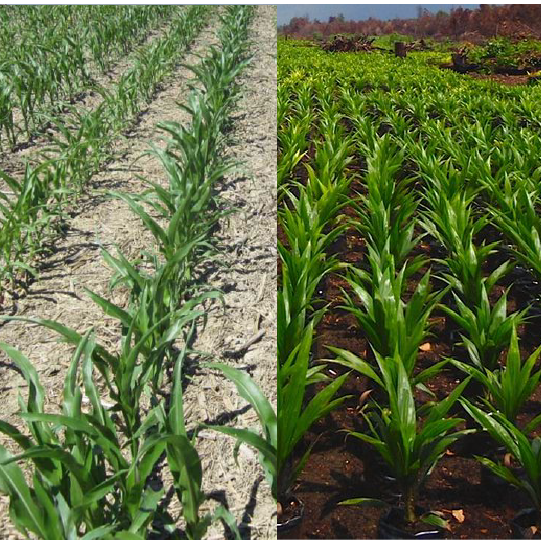How to transform Africa’s food system

Introduction
In 2021, one in five people in Africa was affected by hunger, and the continent had the highest prevalence of undernourished people globally. The authors argue that food systems in Africa can be more resilient if their development includes climate adaptation.
About 64% of the world’s available arable land is in Africa. The continent is also host to a young workforce, and a range of traditional agricultural practices and emerging technologies that can revolutionize food production and trade. Yet, the number of undernourished African people is rising, with an increase from 15.5% to 20.3% between 2010 and 2021. The population in Sub-Saharan Africa is expected to almost double by 2050, to reach about 2.1 billion people, which will further increase demand for food. While efforts are being made to enhance Africa’s food security and resilience, existing food systems have not properly addressed its needs and priorities.
This paper proposes five pathways to help shape and transform Africa’s food systems, drawing on ideas discussed at a session at the Adaptation Futures Conference held in October 2023 in Montreal, Canada that was convened by the African Research Initiative for Scientific Excellence programme.
This weADAPT article is an abridged version of the original text, which can be downloaded from the right-hand column or below (on mobile device). Please access the original text for more detail, research purposes, full references, or to quote text.
1. Develop food systems on urban fringes using green infrastructure
By 2050, African cities are expected to accommodate an additional 950 million people. One way to reach this goal is to use all available urban spaces for food production including vertical walls, rooftops, community gardens, and vacant lots. The use of climate-smart agriculture techniques by, for instance, using drought tolerant crop varieties and drip irrigation, can significantly contribute to the supply of fresh produce in urban areas.
Working with local communities and relevant private sector actors is crucial to fostering a sense of ownership and collective responsibility and ensuring that initiatives are tailored to local needs for long-term maintenance and success. The public-private partnerships can help secure funding and technical support to overcome the challenges of implementing peri-urban agricultural practices. For instance, the City of Tshwane Metropolitan Municipality in Gauteng province, South Africa, has demonstrated how one-on-one extension programmes and the revitalisation of local traditional institutions can help develop successful climate- smart adaptative strategies.
2. Revamp urban agroforestry policy and practices
The integration of trees with crops and/or livestock via agroforestry has proven to be an effective multifunctional approach to food production and conservation. One of the notable examples of agroforestry initiatives is the parklands system in the Sahelian zone of West Africa where crops are grown under a discontinuous cover of scattered trees, thus providing a buffer to extreme climate events that can sustain agricultural production. In northern Tanzania, multi-storeyed agroforestry cropping systems integrate several shrubs and trees with food crops and animals on the slopes of Mount Kilimanjaro.
For agroforestry initiatives to thrive, urban (agro) forestry policy reforms should provide an environment that enables the development of integrated urban farming and good practices for their application. The policy reforms should address issues such as land tenure and ownership, high agroforestry investment costs, and limited availability and access to training. Training programs and workshops on agroforestry techniques can equip urban farmers with the knowledge and skills needed to maintain sustainable tree-crop systems.
3. Reform land use policies
Africa’s high population growth rate, coupled with the resulting urban expansion, puts agricultural land at risk of encroachment. Urbanization guidelines and policies should encourage high density residential development, limit urban expansion, and designate green spaces and agricultural land. A good example where controlled urbanization has worked is in Egypt’s Nile River Valley and Delta where urban expansion is now limited to desert areas to minimize loss of agricultural land. Other interventions include improving land tenure security to incentivize communities and landowners to keep their land in agricultural production. Additionally, real estate developers should invest in urban redevelopment projects in previously built-up areas rather than greenfield sites.

4. Invest in technology, research, and innovation
Africa spends about 4.3% of its total public spending on Agriculture—falling short of the 10% target of the 2014 “Malabo declaration on Accelerated Agricultural Growth and Transformation for Shared Prosperity and Improved Livelihoods”. More investments are needed to facilitate the transition of African agriculture from labor-intensive, low-productivity activities to skills-intensive approaches and build a resilient African food system.
Other relevant interventions include shifting the narrative from food availability to the development of resilient food systems by ensuring that farming is intensive, climate-smart, and technology-enabled. Efficiency improvement in Africa’s food system is required in areas such as production, storage, processing, and packaging of foods. Digital technologies should be leveraged to deliver agricultural information and training to remote areas and expand access to capital and resources.
Considering the pivotal role played by agricultural research in agri-food systems, food system transformation requires intentional and targeted investment and innovation capacity strengthening. Scientific exchanges in Africa and beyond should be strengthened to facilitate awareness of technological and scientific advances in the transformation of the food system and contribute to investments in the creation of locally relevant urban food systems.
5. Reduce inequalities and enhance inclusive adaptive capacity
Existing social and structural inequalities perpetuate differential impacts and responses to shocks and stressors on various social groups, including women, indigenous communities, and smallholder farmers. Moreover, disparities in gendered roles in land ownership and access to credit, financial services, markets, and agricultural labor influence the degree of exposure and sensitivity to disruptions in food security. Hence, strengthening of inclusive adaptive capacity of both communities and systems can enhance food system resilience in the context of a changing climate.
In 2018, women accounted for just 33.3% of researchers globally and 33.5% in sub-Saharan Africa. This calls for more investment in building gender-responsive research and innovation capacities for both individuals and institutions to ensure that food system innovations are locally relevant, equitable, and inclusive.
Achieving food security entails ensuring that all people have physical, social, and economic access to safe and nutritious food at all times, allowing them to lead active and healthy lives. If adequate measures are implemented, Africa can become a food secure continent and shift from being a primary food importer to a net food exporting continent, contributing to feeding the world.
Suggested citation
Ogega, O.M. Korsten, L., Oti-Boateng, P., Odongo, D., Thorn, J. (2024) How to transform Africa’s food system. Nature Communications Earth & Environment, 5:82.
This paper has been produced with the financial assistance of the EuropeanUnion through the African Research Initiative for Scientific Excellence (ARISE; Grant no. DCI-PANAF/2020/420-028). All stakeholders of the ARISE programme, as well as the hosts (including Ouranos, Canada) and participants of the 2023 Adaptation Futures Conference, are acknowledged and appreciated for their contribution to this article.



(0) Comments
There is no content